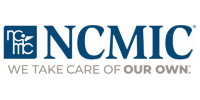The Sherman College of Straight Chiropractic Board of Trustees recently announced the appointment of Jon C. Schwartzbauer, D.C., as the college’s fourth president, effective August 13. A Sherman alumnus, Schwartzbauer brings a breadth of academic, leadership and administrative experience, as well as a passionate commitment to vertebral subluxation-centered chiropractic. Most recently he has served the college as vice president for academic affairs and director of the Leadership and Practice Management Institute. Schwartzbauer and his wife, Mitzi, a clinical sciences faculty member at Sherman, ran Schwartzbauer Straight Chiropractic Center in Mahtomedi, MN, for five years before he joined the Sherman College faculty in 2002. The couple also served as team chiropractors for the St. Paul Saints, a minor league baseball team in their home state of Minnesota. Schwartzbauer was selected in early 2006 to lead the launch and development of Sherman College’s Leadership and Practice Management Institute (LPMI). As LPMI director, he worked to create a culture of ever-improving leadership within the chiropractic profession. He instituted Sherman College’s Success Colloquia, a series of seminars designed to enhance leadership and practice management skills for members of the chiropractic profession as well as Sherman students and faculty. He also laid the groundwork for a student leadership program on campus. He was named vice president for academic affairs in December 2006. In addition to the doctor of chiropractic degree he earned in 1997, Schwartzbauer holds a B.S. from Excelsior College. His appointment as president follows a nationwide search and comprehensive selection process that provided the college with a broad array of talented candidates. “I am committed to being a faithful steward to the college’s history and working with the college community as we address the opportunities in chiropractic education today,” Schwartzbauer says. “I look forward to working with our talented and dedicated board, faculty, staff, students, alumni and supporters to strengthen Sherman College and the chiropractic profession.” Schwartzbauer says his priorities include increasing enrollment and fund-raising at the college. “I am grateful for the trust the Board has placed in me,” he says. "I intend to put my heart and soul into Sherman College.” Sherman Board Chair Cindy Pekofsky, D.C., says the trustees look forward to working with Schwartzbauer as he continues to lead and advance the college’s mission of being the leader in bringing straight chiropractic to the world. “We are excited to welcome Dr. Schwartzbauer as Sherman College’s fourth president, and we look forward to the great things we will accomplish for Sherman College and for the chiropractic profession under his leadership and guidance,” she says. Pekofsky adds that the continued service of Sherman College’s Interim President and founder, Thomas A. Gelardi, D.C., will be invaluable in the coming months as he helps provide a seamless transition to Dr. Schwartzbauer’s dynamic leadership. “The board is extremely grateful for Dr. Gelardi’s dedicated service to the college and for his many contributions to the college’s successes during his tenure as interim president for the past two years,” she says.
- Home
- About
- Find a Doctor
- Membership
- Education
- News
- Newsletter
- Conventions & Symposiums
- Webinars
- Positive Press (F4CP) ↪
- Insurance and Medicare ⚿
- New Practitioners ⚿
- Center for Excellence ⚿
- Informative Links
- Mandated Reporter Training↪
- Leadership
- Officers and Regional Directors
- Districts
- District Officers ⚿
- District Map
- District 1 (Manhattan)
- District 2 (Brooklyn)
- District 3 (Queens)
- District 4 (Bronx)
- District 5 (Staten Island)
- District 6 (Nassau)
- District 7 (Suffolk)
- District 8 (Westchester)
- District 9 (Mid-Hudson)
- District 10 (Capital Region)
- District 11 (Mohawk Valley)
- District 12 (Central NY)
- District 13 (Binghamton Area)
- District 14 (Rockland County)
- District 15 (Finger Lakes)
- District 16 (Southern Tier)
- District 17 (Western NY)
- Committees
- Bylaws ⚿
- Code of Ethics ⚿
- Elections ⚿
- Advocacy
- Sponsors
- Classifieds




